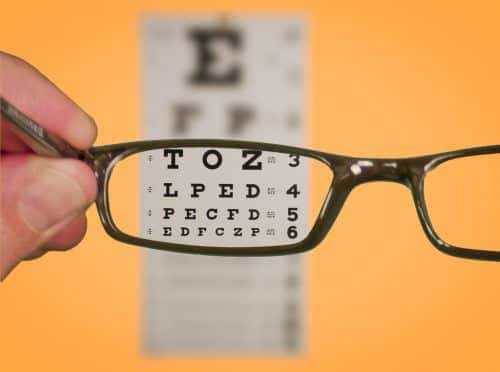If you wear glasses or contacts, you probably already know whether you are nearsighted or farsighted. But do you really know what that means for your vision? Vision results from an intricate and complicated system of muscles and membranes contracting and reflecting so that you can see. Near and farsightedness are the results of dysfunction in that system, causing your eyes to struggle to see clearly. It is important to have corrective lenses for these conditions to strain the system over time further. Here’s a closer look into how near and farsightedness occur and what you can do to fix them.
Normal, healthy vision results from the visual image being focused directly on a light-sensitive membrane called the retina. A person with normal vision can see objects clearly, both near and far. This is usually measured as 20/20 vision, but humans have been recorded to reach 20/10 vision. That means a person can see at 20 feet what someone with an average 20/20 vision might be able to see at 10 feet. The human eye belongs to a group of eyes called camera-type eyes, which means the cornea focuses on a membrane called the retina. But our vision is nothing compared to a hawk’s — who can see at 3 feet what the average person needs 20 feet to see. With eye conditions like near and farsightedness, our eyesight is even less competitive than a hawk’s.
Nearsightedness
Also known as myopia, nearsightedness is caused by the visual image the eye receives being focused in front of the retina rather than directly on it. This means the physical length of the eye is longer than the optical length. Myopia progresses most quickly in growing children and teenagers, causing their prescription to change between eye exams rapidly. This means Mom and Dad need to buy new eyeglasses or contacts more often to keep up with their child’s vision. Nearsightedness feels exactly like you might think: it is easier to see objects up close because objects that are far away are blurred to the vision.
Farsightedness
Farsightedness is also called hyperopia and, conversely to nearsightedness, results from the vision being focused behind the retina. This can occur as an effect of an eyeball that is too small or a cornea with minimal focusing power. Hyperopia can be present from birth but tends to go away with age. And since babies aren’t able to tell you whether they can see far away or not, the condition usually doesn’t pose too much of a problem before it is outgrown.
Prescription
Vision is measured in numbers, which is where your specific prescription comes from. These numbers are how optometrists can keep a close watch on how your vision changes over the years. Normal vision is measured as a 0, nearsightedness as -1, 2, 3, and so on, and farsightedness as +1, 2, 3, etc. These numbers can use decimals to get even more specific, usually dividing into quarters. So, for example, an extremely nearsighted person might have a prescription labeled -5.25 for both eyes. And maybe at this person’s next eye exam, their prescription changes to -5.5 for their left eye and remains -5.25 for their right. It has been shown that people who develop certain diseases or disorders that affect the vision can have their vision naturally corrected. For instance, someone with diabetes may find their prescription changes from being rather farsighted to having perfect vision. While this is a nifty side-effect, it’s important to see an eye doctor if you have this kind of drastic change in vision without warning.
How to Correct Near and Farsightedness
Nearsightedness and farsightedness tend to be a result of genetic and environmental factors. These environmental factors can include extensive up-close work, like reading or computer use. The vision should begin to stabilize in early adulthood. This is because the environmental factors that caused the blurry vision are no longer present or simply because the body is done growing.
Your optometrist will perform an eye exam to test refractive errors in your eyes to diagnose myopia or hyperopia. They will also test your eye pressure in addition to performing retinal and slit lamp examinations.
Usually, the best way to correct blurry vision is with glasses or contact lenses. These are designed to correct how the light is focused on the retina, causing blurred vision to become clear. Once your prescription stabilizes, you also have the option to look into LASIK surgery to have your vision corrected. This is a more permanent fix for your eyesight since the cornea’s shape is changed with a laser. It will not prevent you from likely needing reading glasses in the future, but it can be considered less cumbersome than putting in contacts or wearing glasses. It is up to personal preference, but you should consult your optometrist at Jackson Davenport about your options for myopia or hyperopia. They will make sure you find the best option for your eyes’ longevity and the quality of your vision. Call now to get your eye examination today!

